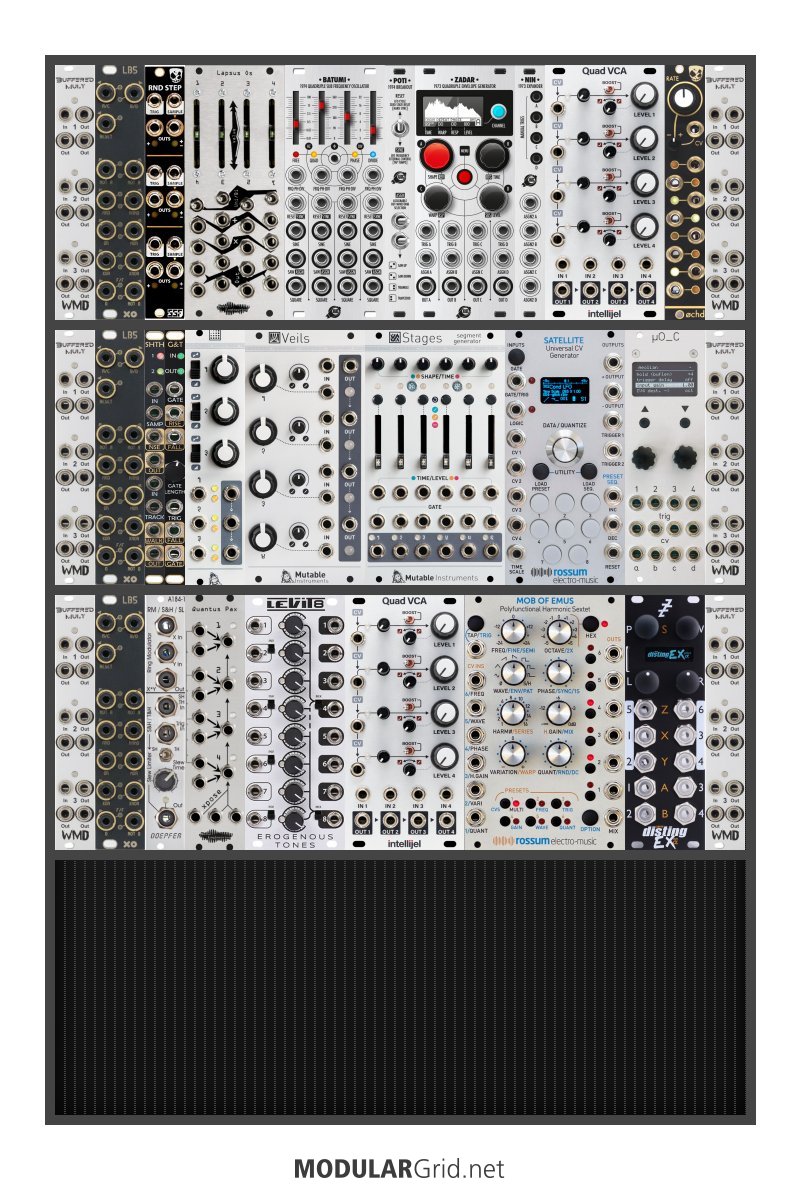None of them.
First up, when building a full system, working in "blocks" like this is going to result in a system that doesn't reflect your actual signal flow. It's best to group things by function than by what can be stuck together in these blocks. For example, if you've got something in there that could benefit from having a quadrature LFO (like "strumming" a Veils), well...since you've got these blocks but they don't have a quadrature oscillator with the exception of the Batumi/Poti pair...but at that point, you're using ALL FOUR LFOs in that to do what ONE module that's not in these is capable of. And that's just one example.
Secondly...what's with all of the buffered mults? You really only need these for distributing CVs to oscillators, filters, and other modules that need a CV without voltage sag. The sag results from having too many devices on the same CV source, so you use buffers to "regenerate" the CV. But you DON'T need six of them! In a small build, in fact, using 24 hp on JUST mults is a terrible idea; small builds are better served with inline mult widgets or stackcables, and if you have more than four modules that need properly-scaled CVs, THAT would be the only reason for using only ONE of those.
A far better approach here to building on MG would be to start with a fullsize cab that's larger than you need, populate that, then start paring things BACK. But work on the whole thing at the same time, not in chunks like these. Start with a 3 x 104 cab, then once it's populated, pare this down so that you wind up with TWO rows of 104 hp. It's 100% doable, and generally results in outcomes that are more usable.
If you're coming from a background that has a lot of "semi-modular" patchables or keyboard synths, I can see how this concept emerged. Keyboard synths are, after all, built in "blocks" like that. But this ain't your dad's Joop-6 here...this is an "open environment" that, while grouping modules will be a must, blocking out everything BEFORE the full build process is on just won't work out very nicely if one of these blocks can't "play nice" with the others.



